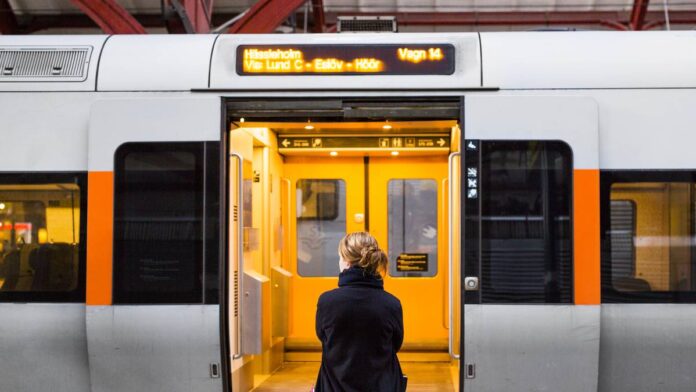The ‘doorway effect’ describes the sudden, unexplained trance at what neuroscientists call an ‘event boundary’
If you’re in ‘back to commute’ mode after the school break, you might have started to notice something strange. Picture the scene: your train chugs into the platform, you’re queued up nicely behind a fellow passenger all ready to board (or indeed, get off). And then… they DON’T MOVE. They’re stuck, frozen like a zombie between the doors. None shall pass. This, despite the fact that the train isn’t even crowded and the static offender isn’t looking at their phone. What’s going on?
Welcome to the ‘doorway effect’ – the term used by neuroscientists to describe the sudden, unexplained trance at what they call an ‘event boundary’. It’s caused by a sudden loss in spatial awareness brought on by a change in our surroundings. It happens when we move between places without putting any effort in (unlike when we drive, say). Because of that passive zone-out, our brains can require a ‘location-update’ and reboot upon our arrival at a new destination or ‘event boundary’. Have you also been stuck behind a commuter who suddenly freezes at the top or bottom of an escalator? Or seen someone go into a room and forget what they came in for? It’s the same effect.
“It’s actually not so much the doorway by itself that causes forgetting, but more about the change of environment,” says Dr Jessica McFadyen, a neuroscientist at University College London, who co-authored a 2021 study of the effect. “Imagine you are in a shopping centre. Taking the lift from the car park to a retail level [which look dissimilar in appearance] is likely to lead to more forgetting than simply taking the lift between two retail levels.”
“Our results also suggest that the more we multitask, the more likely our memory will be flushed out by doorways,” says McFadyen. “When we’re distracted by thoughts about other things, our working memory can more easily become overloaded.”


